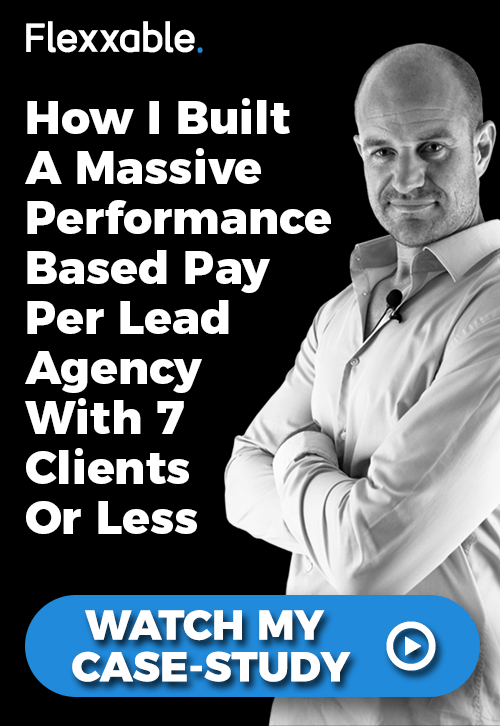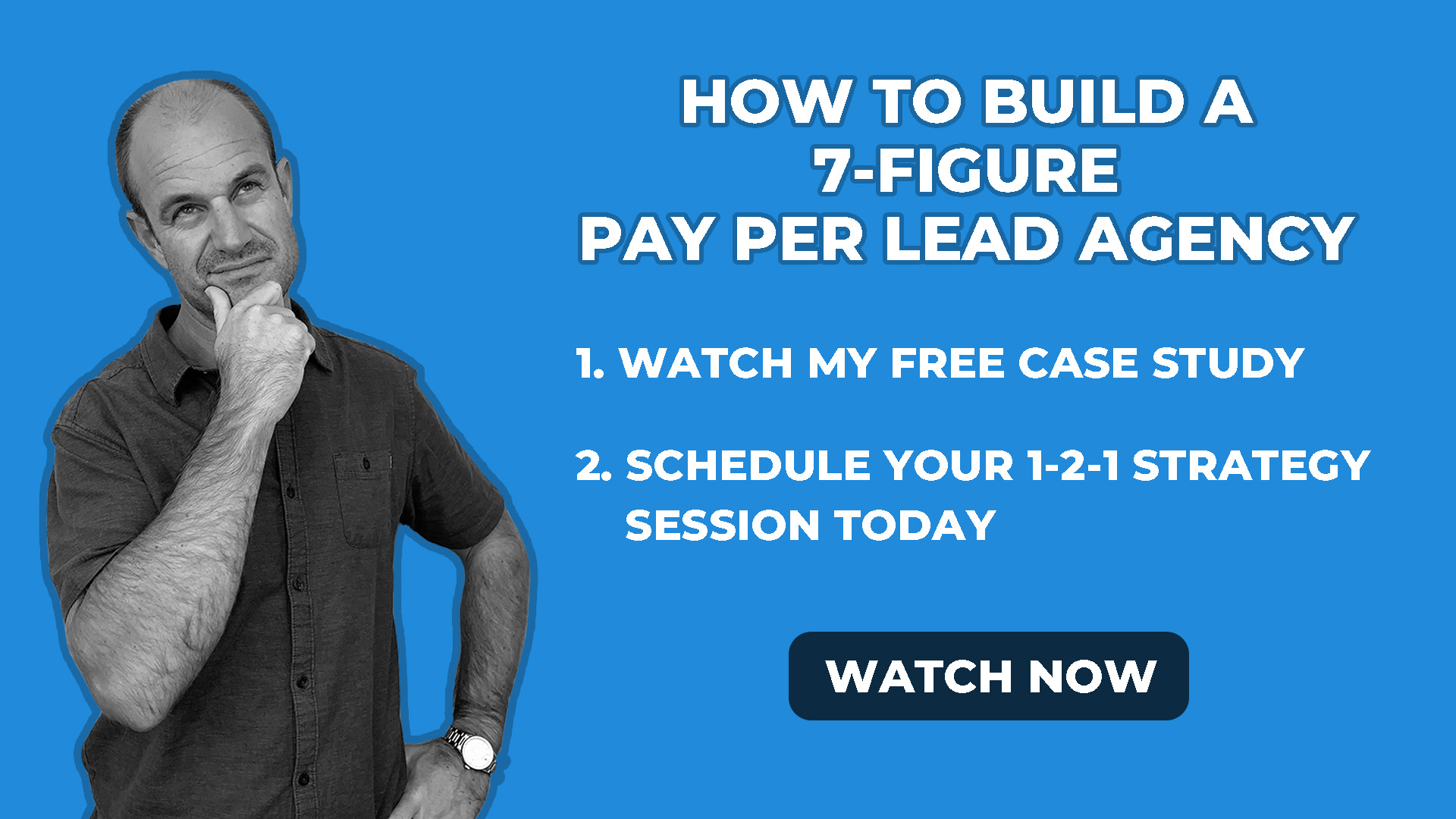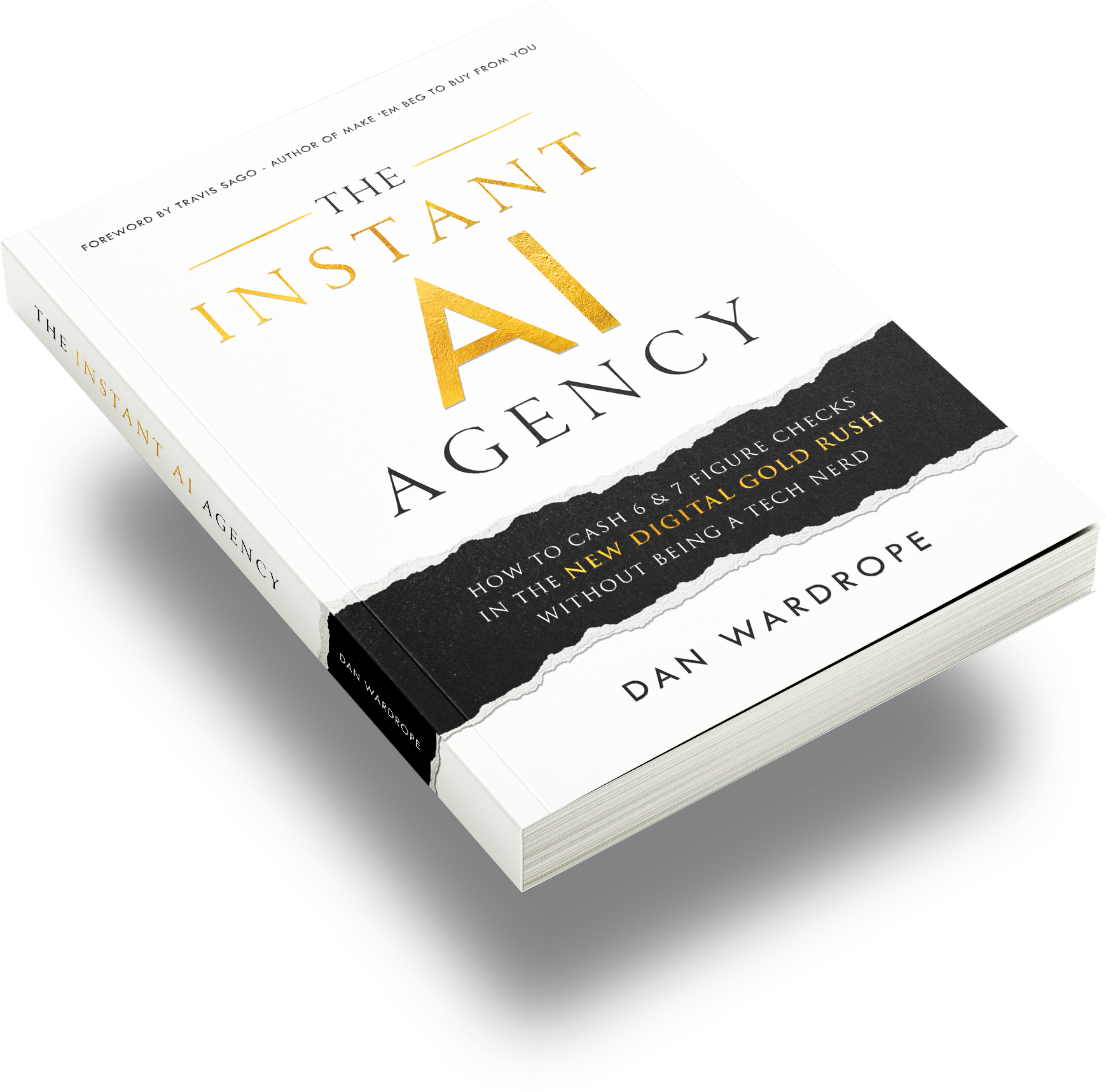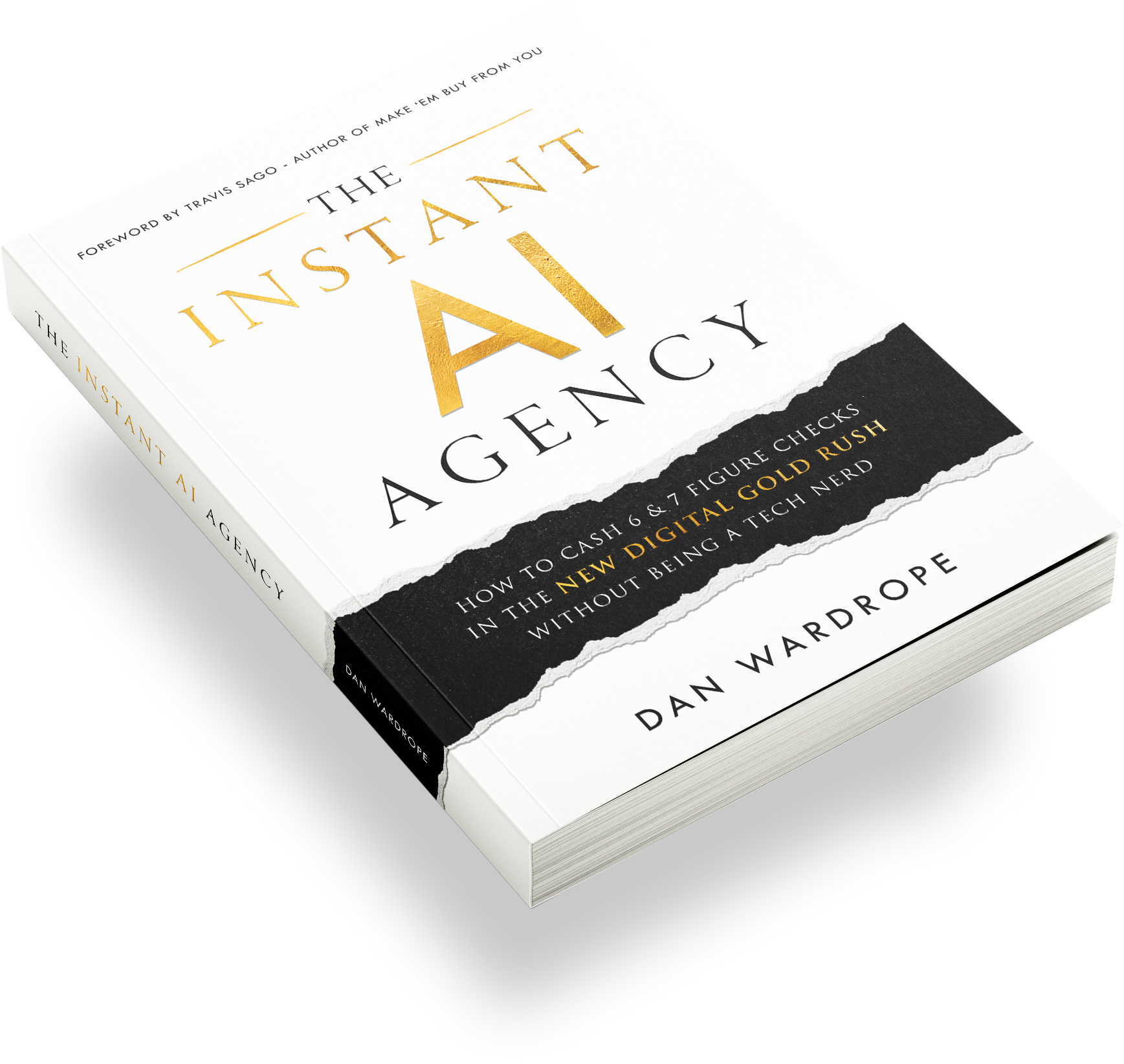Some of you have been working in lead generation for so long, you remember when counting newspaper coupons was the hi-tech way to track leads.
But imagine, just for a minute, that you’re new to the whole thing.
Unaware of the trials and tribulations of entrepreneurship, you’ve got a song in your heart and a mission on your mind. To get started, you – naively, some may say – ask a popular Facebook advertising forum one simple question.
“What’s the most important thing for lead generation?”
An hour later, your phone’s caught fire. You try to salvage the One True Answer from the smoking wreckage of your iPhone XS… but soon run into a glaring problem.
Of the 536 comments on your humble post, every single one contains a different answer.
These are mostly from helpful souls who think they know best.
Ignoring the responses from internet trolls (life lesson: any question posted on the internet, no matter how reasonable, will immediately be subject to mockery), you find six answers that come up the most.
These are:
- Sales funnels
- Cost per 1000 impressions (CPM)
- Cost per click (CPC)
- Click through rate (CTR)
- Split-testing
- Targeting
Okay, but which is it? Which is the most important?
Today’s post is about going through all these things, deeming them IMPORTANT or UNIMPORTANT and coming out with a winner.
1. Sales Funnels
So, we know by now that buying an expensive product or service is a journey, rather than a snap decision.
The buying process usually contains 4 key stages:
- Awareness. The target has seen your ad. Your product/service is now in the spotlight.
- Interest. Now the target has seen it, they’re thinking about buying it.
- Desire. The target has read some info about the product or service, and blimmin’ heck it’s good. At this point in the funnel, the target or visitor will become a lead (if they fill out the form).
- Action. Your client’s sales team chases the leads. A percentage of them become paying customers.
In other words, a sales funnel lets you nurture visitors to leads and leads to customers over time.
Without a sales funnel, your marketing efforts can look a bit… directionless.
I know some people say that a great ad will do all the heavy lifting, priming the customer for your landing page.
In a few cases, that can work. However, for complicated services such as debt consolidation, life insurance and mortgages, you’ll be looking at writing some seriously long copy. No matter how much you’ve made your product or service sound like a “magic pill”, people are naturally suspicious of handing their details over to a faceless company they know next to nothing about.
Something as simple as inserting an advertorial or quiz into your funnel sets you apart from the competition. With an extended sales funnel, you can give your visitors:
- A sense of your brand
- An insight into your reputation (aka, testimonials)
- The benefits and features of your product/service
- Useful information they may struggle to find elsewhere
- Assurance that your irresistible offer is real and not too good to be true
That’s all for your visitors. And every single point up there provides value for your prospect. The more value you give a visitor, the more committed they’ll be to transferring from awareness to interest or interest to desire.
And for you? A good sales funnel helps you:
- Weed out the time wasters. If someone isn’t really interested in your product, they’re not going to read 1000 words about it. Or answer a 20-question quiz.
- Separate the high-quality leads from the “meh” ones
- Know if your ad is working
- Know if the information you provide is valuable enough. No one getting through to the landing page? It may be time to look at your customer avatar and market research again.
- Launch retargeting campaigns for warm traffic
All these points are vital for generating high-quality leads. Clients drool at the mouth for high-quality leads, because some of them are primed enough to become paying customers.
(And if your client is happy and making money, you’ll be happy and making money. That should go unsaid.)
So, I deem SALES FUNNELS to be IMPORTANT.
But NOT the MOST IMPORTANT.
2. Cost Per 1000 Impressions (CPM)
An impression is how many times your content is displayed on any given platform. Impressions are not the same as engagements or clicks. Even if no one clicks your ad, appearing on someone’s feed counts as an impression.
It’s possible for one person to have multiple impressions of the same post. For example, say a brand or business publishes an article, and it appears on your feed. That’s one impression. Then your mate Charlie shares the same article with his friends, and it appears on your feed again. That counts as two impressions of the same post.
So, CPM is how much it costs for your ad to be seen 1000 times, not the cost to reach 1000 people (I’ll expand on that in just a sec).
The CPM is an early indicator of how well your ad is doing out in the field. If your CPM is very high, for example, this could be an early warning sign that your targeting’s off or Facebook doesn’t think your ad is very relevant. If you catch onto this kind of stuff early, you could save yourself hundreds of dollars in the long run.
Or, if your CPM starts off well then suddenly spikes, it may be time to change your ad.
Imagine if your partner made you the most delicious spaghetti carbonara you’d ever eaten. Because you liked it so much, they make it for you again the next day. And the day after that. This goes on for a fortnight. After two weeks, that delicious carbonara isn’t looking so tempting anymore. In fact, the mere thought of it makes your stomach churn.
It’s the same with your Facebook ads. Seeing the same thing over and over makes people tired and grouchy. At best, they’ll ignore your ad. At worst, they’ll start leaving negative reactions and comments.

Once the tide has turned on your Facebook ad, this will affect KPIs like cost per click, cost per lead and click-through rate. Keep things fresh by switching up your ads once your CPM is on the rise.
Finally, don’t be fooled by a sudden drop in your CPM. If your ad has been chugging along nicely with a reasonable CPM, an unexpected dip could mean you need to look at your ad frequency.
I said earlier that CPM means how much it costs for your ad to be seen 1000 times, not how much it is to reach 1000 people.
Your ad may be getting plenty of views (causing the CPM to drop), but it could be by the same people, over and over again.
If these people are seeing your ad but not taking the bait (aka, clicking on your CTA), Facebook is going to take action. They’ll view your ad as irrelevant to your audience, and your costs will rise accordingly. Take any dramatic dip in CTM as a helpful warning sign.
So, is CPM something to watch out for? Definitely. It tells you all sorts of things about your ad campaigns, warning you quickly enough for you to fail fast and sort the problem even faster.
Hence, I deem CPM to be IMPORTANT.
However, it is NOT the MOST IMPORTANT.
3. Cost Per Click (CPC)
KPIs like Ad Relevance Scores, CPM, CPC and CPA (cost per acquisition) all have a knock-on effect on each other. So, if your CPM is high, it’s likely your CPC will be high too.
The cost per click is the middle sister of cost per 1000 impressions and cost per acquisition (or cost per lead). So, while an impression means the ad has appeared on someone’s feed, a click means there’s now some interaction.
If the user clicks the CTA button or link in your ad, which then directs them to another page, that counts as a measurable click.
Likewise, if you have an ad with longer copy and the user clicks “see more” to read it, that also counts as a measurable click.
Either way, a click tells you that your ad is garnering some attention. However, if that attention comes as a sky-high cost, it may not be worth running that particular ad.
There are lots of reasons why your CPC is high, and most are similar to the high CPM problems.
- Facebook thinks your ad won’t resonate with the target audience and has given it a low relevance score. This means Facebook isn’t showing the ad to many people.
- Your audience too broad
- Your ad campaigns and audiences overlap
- The target audience is tired of your ad
- Your click-through rate is low, so Facebook lowers the ad’s relevance score.
Depending on which one you’re monitoring, CPM and CPC are good ways to gauge the financial success of your Facebook ad campaigns. The amount of money you’re spending should let you know if alarm bells are necessary – letting you jump in and make the changes you need.
But if you’re starting a new niche and your CPC or CPM is high, don’t plunge into a panic. Some niches will get a higher CPC or CPM than others, simply because there’s more competition on Facebook. Once you’ve been running ads for a couple of weeks, you’ll be able to tell the difference between a reasonable CPC and a high one.
So, as with CPM, I deem CPC to be IMPORTANT.
But NOT the MOST IMPORTANT.
4. Click-Through Rate
 If CPC is the middle sister of CPM and CPA, then CTR (click-through rate) is the middle sister of CPM and CPC. It’s quite a large family.
If CPC is the middle sister of CPM and CPA, then CTR (click-through rate) is the middle sister of CPM and CPC. It’s quite a large family.
I said before that there are two types of clicks measured on Facebook ads. Actually, there’s more, but we’ll focus on two just for now.
The first one is known as Clicks (All). This includes:
- Link clicks
- Clicks to profile pictures or business profile pages
- Reactions (like, love, angry, etc.)
- Comments and shares
- Clicks to enlarge pics and videos to full screen
As you can imagine, all these clicks add up very, very quickly.
Obviously, Clicks (All) is a useful metric for measuring how much engagement your ads are getting. However, it’s almost totally useless if you want to know how many link clicks users have made.
Link clicks are what you should be looking at if you want to know how many people are clicking on your CTA. However, they also include:
- Links to other websites
- Playable experiences
- Videos hosted by other sites, like YouTube and Vimeo
- Other destinations on Facebook.
- Clicks made by the same people multiple times. You can weed these out by monitoring your Unique Link Clicks.
CTR (click-through rate) is calculated by the number of link clicks divided by the number of impressions.
Lots of people use CTR as a measurement of how successful their ad campaign is. A high CTR shows that people have lots of interest in your ads. It also proves to Facebook that your ads are relevant to the target audience so Facebook will show it more often.
In turn, a higher CTR means a lower CPC. And that’s good news… for the most part.
As CTR includes videos, links to other websites, etc., it doesn’t necessarily mean that users are clicking your call to action and reaching the next stage in your sales funnel. The CPC is calculated using all these dead-end clicks as well, so a cheap CPC doesn’t always mean you’re making more conversions.
Like CPM and CPC, measuring CTR has its pros and cons. If you’re running multiple campaigns, CTR can be a good indicator of which campaigns are running successfully, and which will need some more work. Facebook will love you for having a high CTR because it prioritises “meaningful interactions” than anything else. Meaningful interactions = more impressions = higher CTR = lower CPC. It all boils down to saving money.
So, yes, CTR is IMPORTANT.
But it’s still NOT the MOST IMPORTANT.
5. Split-Testing (A/B Testing)
Split-testing applies to ads, landing pages, advertorials, you name it.
If you’re not split-testing a majority (or all!) of these things, you’re definitely leaving money on the table.
See, the only way you’ll find out how well your lead campaigns are working is via audience engagement.
Spent ages on an ad and love the way it looks and reads? The harsh reality is that if your target audience hates it, you’re not going to generate any leads. It doesn’t mean that your writing is terrible, or the image quality is poor. It just means that the ad doesn’t appeal to the specific group of people you’re trying to target.
So, a split-test is a way of testing multiple versions of your ad, landing page, advertorial, etc., against one another to see which version works best.
Sometimes, your variations can test significant elements, such as layout, writing style and page design.
Other times, it may be as simple as changing one word in a headline or a specific image.
It really doesn’t take much for an audience to turn against you!
You need to approach split-testing the same way you would a science experiment. All split tests start with a control – aka the original version of whatever part of the sales funnel you’re testing.
To make it a split test, you’ll also need a variant. You can have one of these, or two, or three. As long as an equal portion of your traffic is sent to the control and its variants, you’ll have a clear indication of which comes out top.
When it comes to creating your variants, don’t change something just for the sake of change. Your market research should tell you what kind of writing style, images, copy and design your target audience will respond to. A split test will help you get all the details right, maximising the lead conversions for your campaign.
At the end of your split testing, you should:
- Have got rid of any guesswork in your marketing campaign
- Be able to create better content
- Know how customers truly respond to the presentation of your offer (this will clear up some of the more vague ideas from your customer avatar)
- Have maximised your web traffic
- Yield a higher ROI than before
With all these benefits, split-testing is one of the most IMPORTANT elements of generating high-quality leads.
But it’s still NOT the MOST IMPORTANT.
 6. Targeting
6. Targeting
Cutting to the chase, obviously targeting is essential for lead generation.
Launching a campaign without a target market in mind is like clay pigeon shooting in a blindfold. And, to be honest, Facebook wouldn’t let you do it.
Facebook has got so good at finding audiences, you can go as granular as you like. So, if you wanted to target men who are 54 years old, live in Devon, and like landscape gardening, that wouldn’t be a problem. Then, once you’ve got enough data on your pixels, you can start ferreting into lookalike audiences.
Problem is, some advertisers get so caught up in the targeting criteria, they don’t leave themselves enough prospects to advertise to.
If you’re working on a national or global scale, some extra measures shouldn’t limit the audience too much. But if you’re generating leads for local clients (gyms, dentists, doctors, etc.), your campaign will soon suffer from over-zealous targeting.
Relax, breathe, and let Facebook do its thing. Then, once you’ve generated enough leads and pixel data, you can start building lookalike audiences and retargeting campaigns.
On a national and global scale, targeting patiently and correctly means you’ll never run out of an audience to target.
That means you could potentially generate millions of leads!
Yep, targeting is IMPORTANT.
But it’s still NOT the MOST IMPORTANT.
So… What’s The MOST Important Thing For Lead Generation?
Okay, I’ve led you a bit of a merry dance (but I hope you’ve learned some stuff too).
I’m not trying to be difficult – all these metrics and strategies are important for generating high-quality leads at a budget you (or your client) can afford.
But BEFORE the sales funnel, BEFORE the KPIs like CPM, CPC and CTR, BEFORE split-testing and targeting, comes…
7. The Creative
Yep. When asked “What’s the most important thing for lead generation”, some people get so carried away by ad and conversion optimisation etc., they forget about creating the ad itself.
See, targeting and split testing and all the other stuff is absolutely useless if your ads suck. Nothing from then on forward will save your campaign.
Good creativity in ads often stems from having an irresistible hook. A hook is usually a single word or phrase that describes the main benefit of your offer.
For example, if you were looking to help men with debt problems, your hook could be: Get Up To 75% Written Off Your Debt.
Or, if you wanted to train people on how to make great Facebook ads, you could say: Get Your Free Swipe File With 500+ Facebook Ad Examples.
Your hook should be interesting and enticing enough to compel the reader to make that click. Anything too complicated, nonsensical or flat-out boring is going to be left by the wayside.
As always, your hook should offer a solution to your customer’s key problem.
A great way to find this solution is to take a good look at your ideal customer’s pain points.
- What are their hopes and fears?
- What’s stopped them from taking action before?
- What are their top 3 daily frustrations?
- What are they angry about? Who are they angry at?
Once you’ve compiled a sizeable list, move onto the next couple of questions:
- What do they secretly desire the most?
- What can I say/do/or give them right now that will help them?
- How will what I say/do/give them entice them further into the sales funnel?
Coming up a hook isn’t easy, so expect to write between 10-20 variations before you strike gold.
And here’s the real trick: with your ad, with your hook don’t make it sound like you’re selling anything.
I mean, obviously, Facebook users will know it’s an ad. But as soon as you hint towards something as vulgar as a transaction, the audience will immediately lose interest.
People don’t go on Facebook to shop, it’s as simple as that. With items like clothes, cosmetics, technology, etc., the people advertising those have it a little easier. All they have to do is slash some prices, have some glossy photos, or maybe a short video of their product in action.
However, for services like mortgages, pensions, life insurance, etc., that’s not going to wash. I know, it’s unfair.
So, when coming up with a hook and headline for your ad, keep the following things in mind:
- Your hook and headline need to be intriguing
- They need to imply a pain point…
- … And then they should promise a solution
- They should be clear and precise
- They should use action words that aren’t “buy”, like “learn more”, “find out now” and “Try”.
If you’ve got a great hook, EVERYTHING from split-testing to creating a sales funnel to actually generating leads will become 100x easier.
Conclusion
So, to loop back to the very beginning, all the strategies and metrics in this article are important when it comes to generating leads.
But writing a great hook is the most important as it has a knock-on effect on everything else. Repeat, “Creative is everything. Creative is everything. Creative is king” like a mantra before you sleep tonight.
If you’re looking for more advice on how to:
- Create Facebook campaigns that convert like crazy
- Generate top-quality leads in your niche
- Only attract the highest paying clients,
- Get out of retainer contracts for GOOD
Then watch my FREE case study now. Just click “Watch Now” below!








